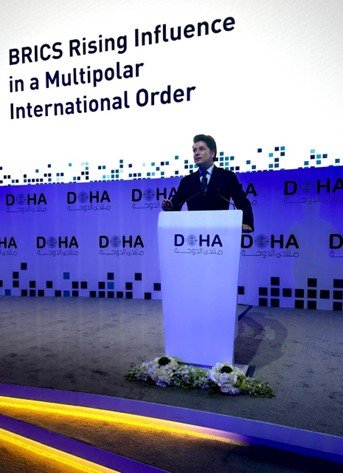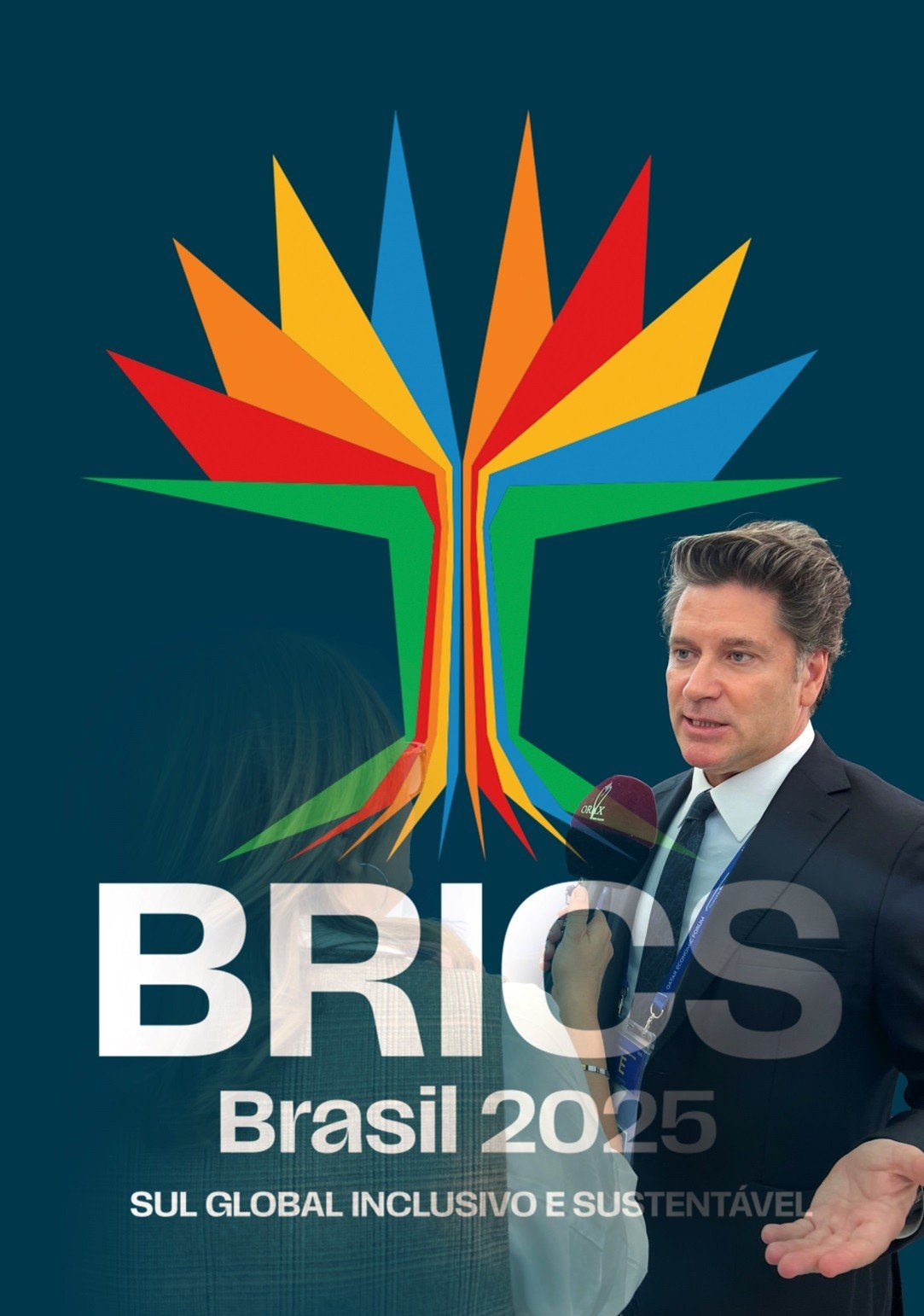Al Khobar, Saudi Arabia. July 9, 2025 – The BRICS currency challenges with inflation pertain to the complexities and hurdles faced by the BRICS nations—Brazil, Russia, India, China, and South Africa—as they seek to establish a unified currency amidst persistent inflationary pressures and the overarching dominance of the US dollar in global trade. Initially conceptualized as a group with substantial economic potential, BRICS has evolved into a significant alliance aimed at reforming global economic governance while promoting cooperation on various issues including trade, climate change, and security.
Notably, the bloc has faced substantial inflation challenges, exacerbated by global economic conditions, geopolitical tensions, and divergent domestic policies.
Navigating with our Investment Holding Licorne Gulf across the Globe, the Co-Founder Alexandre Katrangi and its Partners constantly faces and addresses to their Investees and Partners along with Irina Duisimbekova the Challenge and the necessary arbitrage for their Investment basket between the two worlds. From Beijing to Washington, going through Saudi Arabia , GCC countries, London and Paris; frequently questioned about the subject by these respectives Governements, Licorne Gulf provides their strategic directions within the frame of country policies to let the regulator adjusts their investments initiatives, incentives and guidelines.
Inflation management has become a critical concern for BRICS countries, particularly Brazil, which has experienced significant inflationary dynamics influenced by a combination of monetary policy, political stability, and external commodity price fluctuations. For instance, Brazil’s attempts at inflation targeting have revealed complexities in balancing economic stability and income distribution, while the impacts of global supply chain disruptions continue to contribute to inflationary pressures across the bloc.
Furthermore, differing inflation rates and economic conditions among member states complicate the prospect of establishing a common currency, which is perceived as essential for enhancing economic cooperation and reducing reliance on the dollar; “Efforts to implement a BRICS currency also highlight notable controversies, particularly around governance structures and the feasibility of coordinated monetary policy among diverse economies. Theoretical frameworks such as Optimal Currency Areas (OCA) illustrate the challenges posed by the economic disparities within BRICS, suggesting that significant political convergence and cooperation would be necessary to achieve monetary unity” highlighted Irina Duisimbekova in Monte Carlo International IM Fund Forum June 2025.

As BRICS countries explore local currency settlements and alternative financial frameworks, the potential for a unified currency could reshape the global financial landscape, posing both opportunities for enhanced economic collaboration and risks of imbalances and instability among member states.
Historical Context to Recap:
The BRICS nations, initially grouped under the acronym “BRIC” by economist Jim O’Neill in 2001, were identified for their potential to reshape the global economy due to their substantial populations and rapid economic growth
This grouping, which included Brazil, Russia, India, and China, was later expanded to include South Africa in 2010, forming BRICS. The bloc aims to reform global governance structures that have long favored Western powers, particularly in institutions such as the International Monetary Fund (IMF) and the World Bank
Over the years, BRICS has evolved into a significant political and strategic alliance, promoting cooperation among member states on issues like trade, climate change, and security.
However, a crucial aspect of this alliance is the ongoing challenge posed by the dominance of the US dollar in global trade and finance. The US dollar, while efficient for transactions and a standard reserve currency, has faced increasing scrutiny and calls for de-dollarization from BRICS nations.
As the BRICS group contemplates alternatives to the dollar, the historical context of global monetary systems becomes essential. The dollar’s ascendancy was solidified after World War II, when it became the primary currency for international trade settlements and pricing commodities, supported by frameworks like the General Agreement on Tariffs and Trade (GATT) and the World Trade Organization (WTO).
However, recent geopolitical tensions and the weaponization of the dollar by the West have prompted BRICS countries to explore local currency settlements and other alternatives, indicating a shift towards a multi-currency financial system.
The challenges faced by BRICS in achieving de-dollarization reflect the complex dynamics of their diverse economic structures and political cultures. As the bloc expands to include additional members and partners, such as Argentina, Egypt, Ethiopia, Iran, Saudi Arabia, and the United Arab Emirates, the aspiration for a common BRICS currency could face significant hurdles, including the need for coordinated monetary policies and mutual trust among member states.
Inflation Challenges: the new big piece of 2025
The BRICS nations have faced significant inflation challenges, shaped by a complex interplay of domestic policies and global economic conditions. In Brazil, for instance, inflation dynamics have been influenced by various factors including cost-push inflation, distributive conflict, and the impacts of monetary policy. Notably, the New Consensus model posits that monetary policies, while aimed at controlling inflation, can inadvertently affect income distribution and long-term growth potential, especially in the presence of persistent cost-push factors.
Economic Policy and Political Stability
The political landscape significantly influences Brazil’s economic policy regarding inflation management. The period of Dilma Rousseff’s presidency (2015-2016) is particularly illustrative, characterized by political instability and a shift towards austerity measures that aimed to contract demand in response to rising inflation and allegations surrounding corruption. These policies included fiscal adjustments, interest rate hikes, and an increase in administered prices, all of which aimed to stabilize the economy but also risked exacerbating existing inflationary pressures.
Global Influences
Globally, fluctuations in commodity prices pose ongoing risks for inflation in BRICS countries, particularly Brazil, which is heavily reliant on exports of commodities like oil and food. Geopolitical tensions and global supply chain disruptions can lead to spikes in these prices, thus exerting upward pressure on domestic inflation rates.
Furthermore, wage-price dynamics in a tight labor market may contribute to sustained inflation, as rising labor costs could be passed on to consumers, creating a wage-price spiral that complicates inflation management efforts.
“Persistence of Inflation is the real pressure….” – Irina Dusimbekova
Despite various measures, inflation in Brazil has shown resilience, particularly evident during and after the COVID-19 pandemic, when inflation rates surged to over 10% by the end of 2021. While there have been recent improvements, core inflation, which excludes volatile items such as food and fuel, remains above the Central Bank’s target, indicating that underlying price pressures persist.
The interplay between service inflation and broader economic conditions suggests that the fight against inflation in Brazil remains a challenging and ongoing concern.
Comparative Insights
The experiences of other BRICS nations provide additional context to Brazil’s inflation challenges. Research indicates varying degrees of success in managing inflation across the BRICS, with countries like China exhibiting higher inflation stability than Brazil, highlighting the complexities each nation faces in navigating their unique economic landscapes.
Thus, while inflation remains a critical issue within the BRICS bloc, the paths to stabilization are as diverse as the economies themselves.
Currency Strategies
The establishment of a unified currency among BRICS nations is seen as a strategic move to enhance economic cooperation and reduce reliance on the US dollar for international transactions. This initiative aims to lower transaction costs associated with currency conversion, thereby promoting smoother trade and investment within member countries.
A unified currency could significantly benefit small and medium-sized enterprises (SMEs) by alleviating the financial burdens imposed by currency fluctuations and conversion fees, fostering a more competitive business environment.
Theoretical Framework and Economic Stability
The feasibility of a common BRICS currency is analyzed through the lens of the Optimal Currency Areas (OCA) theory, which posits that countries can gain advantages from sharing a currency if they meet certain conditions, such as labor mobility and aligned economic cycles.
Implementing a unified currency could contribute to economic stability by mitigating exchange rate volatility, thereby enhancing investor confidence and attracting foreign investment.
However, this goal requires significant political convergence and cooperation among member nations, as varying economic interests and political landscapes could complicate the process.
Political Cooperation and Governance Challenges
A common currency could also promote enhanced political cooperation within BRICS by fostering closer economic ties and shared objectives.
However, challenges remain regarding governance structures, such as determining which nation would hold the most influence over monetary policy and how to address disputes among member states.
Establishing a central agency to manage the currency’s issuance and ensure price stability would be essential in navigating these governance issues.
Additionally, a focus on detailed risk mitigation strategies is crucial for addressing potential economic shocks and the varying impacts on member states.
Local Currency Settlements and Global Implications.
Recent initiatives among BRICS countries, including agreements to use local currencies for bilateral trade, have underscored the bloc’s commitment to reducing dependence on the US dollar.The proposed BRICS currency is expected to initially function as a unit of account to facilitate these local currency settlements.
This approach is anticipated to reshape the global financial landscape, diminishing the dollar’s dominance and encouraging other nations to explore similar alternatives.
The broader implications of a BRICS currency could include increased competition and innovation in the international financial system, reinforcing the bloc’s influence on global trade and economic governance.
Case Studies
Brazil’s Inflationary Dynamic under Inflation-Targeting
Brazil’s experience with inflation targeting from 1999 to 2014 provides a significant case study regarding the interplay between monetary policy and income distribution. The analysis differentiates two key periods: the initial years of inflation targeting under Fernando Henrique Cardoso (1999-2003) and the subsequent period during the presidencies of Luís Inácio Lula da Silva and Dilma Rousseff (2004-2014).
During the first period, the inflationary targets were frequently unmet due to factors such as imported inflation, driven by currency devaluation amidst external instability, and high inflation rates of regulated prices. These conditions led to a real wage decline as nominal wage growth failed to keep pace with inflation.
In contrast, the second period saw intensified distributive conflict, which paradoxically supported real wage increases but resulted in a relatively stable inflation rate. Even as inflationary pressures persisted, particularly from imported sources, the overall inflation remained within targeted limits due to strong controls on regulated prices and a better management of the economy.
South Africa’s Economic Context
The economic landscape in South Africa is shaped significantly by its history of apartheid and the resulting structural disparities. Following the end of apartheid in 1994, the country faced both opportunities and challenges in integrating into the global economy.
South Africa’s economy is notably diverse, with key sectors including mining, manufacturing, and services. However, it continues to grapple with high unemployment rates and stark social inequality, remnants of its historical context.
In the context of BRICS and potential currency unification, South Africa’s economic disparities can exacerbate challenges related to implementing a cohesive monetary policy across member states. The persistent inflationary issues in South Africa further complicate this scenario, as differing inflation rates among BRICS nations pose significant hurdles to synchronizing economic policies.
The Feasibility of a Unified BRICS Currency
The theoretical framework of Optimal Currency Areas (OCA) provides insights into the feasibility of a unified currency among BRICS nations. According to this framework, certain conditions must be met for countries to benefit from a common currency, including labor and capital mobility, price and wage flexibility, and comparable economic cycles.

Qatar- BRICS Summit 2025
“However, the economic discrepancies among BRICS countries—evident in varying inflation rates and degrees of budgetary discipline—raise concerns about the efficacy of a unified currency. Such disparities could lead to imbalances where some countries benefit disproportionately while others may suffer, undermining the political unity essential for the stability of a currency union.”
However, the economic discrepancies among BRICS countries—evident in varying inflation rates and degrees of budgetary discipline—raise concerns about the efficacy of a unified currency. Such disparities could lead to imbalances where some countries benefit disproportionately while others may suffer, undermining the political unity essential for the stability of a currency union.
Comparative Analysis
Overview of Economic Disparities
The BRICS nations, comprising Brazil, Russia, India, China, and South Africa, present a complex landscape of economic diversity that poses significant challenges to the introduction of a unified currency. Each member exhibits distinct economic structures, levels of development, and inflationary behaviors, complicating the establishment of a cohesive monetary policy. Historical economic contexts, characterized by unique challenges and achievements, further underscore the difficulty of integration efforts aimed at creating a common currency among these nations.
Implications of Economic Differences
The theory of Optimal Currency Areas (OCA), proposed by economist Robert Mundell, outlines the conditions under which multiple nations can benefit from a common currency. Key requirements include the free movement of labor and capital, flexible adjustment of prices and wages, and synchronized business cycles among the participating countries.
However, the BRICS nations exhibit substantial economic discrepancies that could hinder these conditions. For instance, the divergence in inflation rates and varying degrees of fiscal discipline across member states may exacerbate challenges in implementing a uniform monetary policy.
These economic differences are not merely theoretical; they can result in tangible imbalances within the currency union, where certain countries may gain at the expense of others, thereby straining political unity crucial for sustaining the currency’s stability and long-term viability.
Risk Mitigation and International Cooperation
To address potential economic shocks and the uneven impact of a unified currency, BRICS countries would need to develop comprehensive risk mitigation strategies. These strategies should specifically target the unique vulnerabilities of each member state and incorporate contingency measures to manage crises effectively
Additionally, fostering international cooperation with institutions such as the IMF and the World Bank is vital. Engaging with these entities can facilitate knowledge exchange and provide critical support in currency integration efforts and the stabilization of monetary systems.
Future Prospects
The future of the BRICS currency initiative carries significant implications for the global financial landscape and presents both opportunities and challenges for member nations. As BRICS seeks to establish a new currency and payment system, the prospect of a multipolar financial system becomes increasingly tangible. This potential shift may enhance stability and resilience in the global economy by reducing reliance on a single dominant currency, such as the U.S. dollar.
Economic Implications
If successful, the proposed BRICS currency could lead to a more diversified global financial system, where multiple currencies compete for dominance. This development may result in increased competition and innovation in international finance, allowing BRICS nations to assert their economic independence.
The integration of a common currency could also facilitate smoother trade among member states by minimizing transaction costs associated with currency conversion and reducing exposure to U.S. dollar fluctuations.
Challenges to Implementation
Despite the promising outlook, the implementation of a BRICS currency faces substantial hurdles. The differing economic conditions, policy preferences, and levels of development among member countries complicate the integration of their monetary systems.
Issues such as varying inflation rates and economic resilience could pose significant challenges to maintaining a stable unified currency. Furthermore, the logistical complexities of establishing a central bank and harmonizing monetary policies will require significant coordination and resources.
Political and Strategic Cooperation
The establishment of a BRICS currency may also strengthen political and strategic ties among member states. By fostering greater economic integration, the BRICS nations can enhance their collective influence on global governance and security issues. However, achieving political consensus around a common currency will be crucial, given the diverse interests and economic contexts of the member nations.
Technological Advances Technological advancements, particularly in blockchain and digital currencies, are expected to play a pivotal role in facilitating local currency settlements among Global South countries. The proposed BRICS blockchain-based payment system, known as the BRICS Bridge, aims to connect the financial systems of member countries, enabling transactions using central bank digital currencies. Such innovations may help to mitigate the high costs associated with traditional banks.
Media Contact
Licorne Gulf Media Relations
Konstantin Vassily
infos@licorne-gulf.com
Al Khobar, Saudi Arabia



